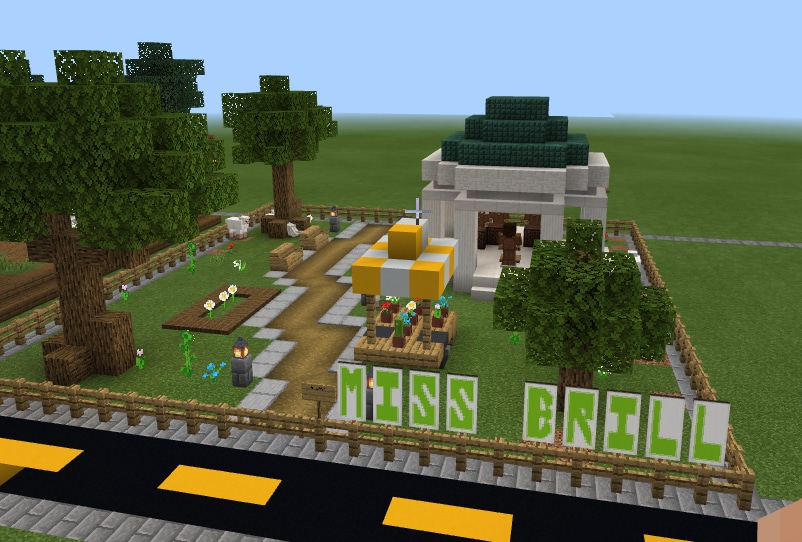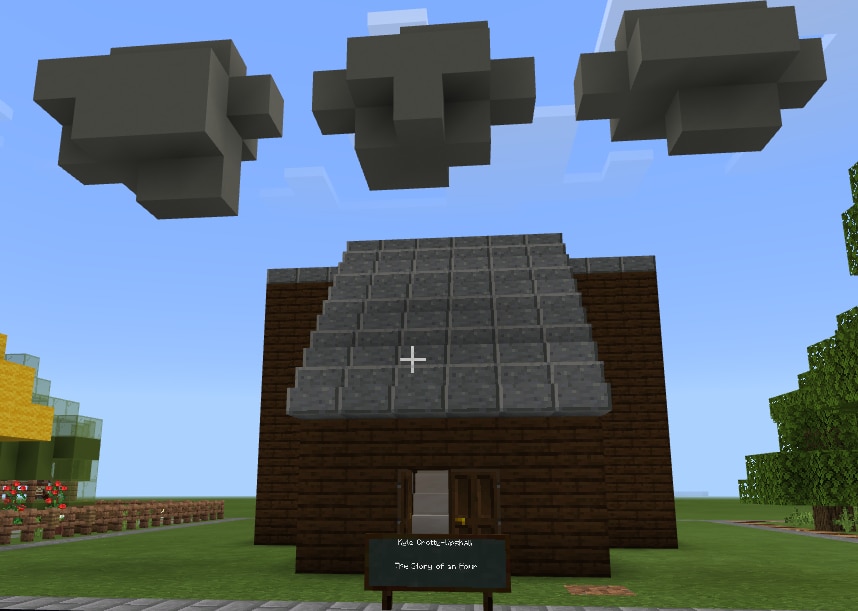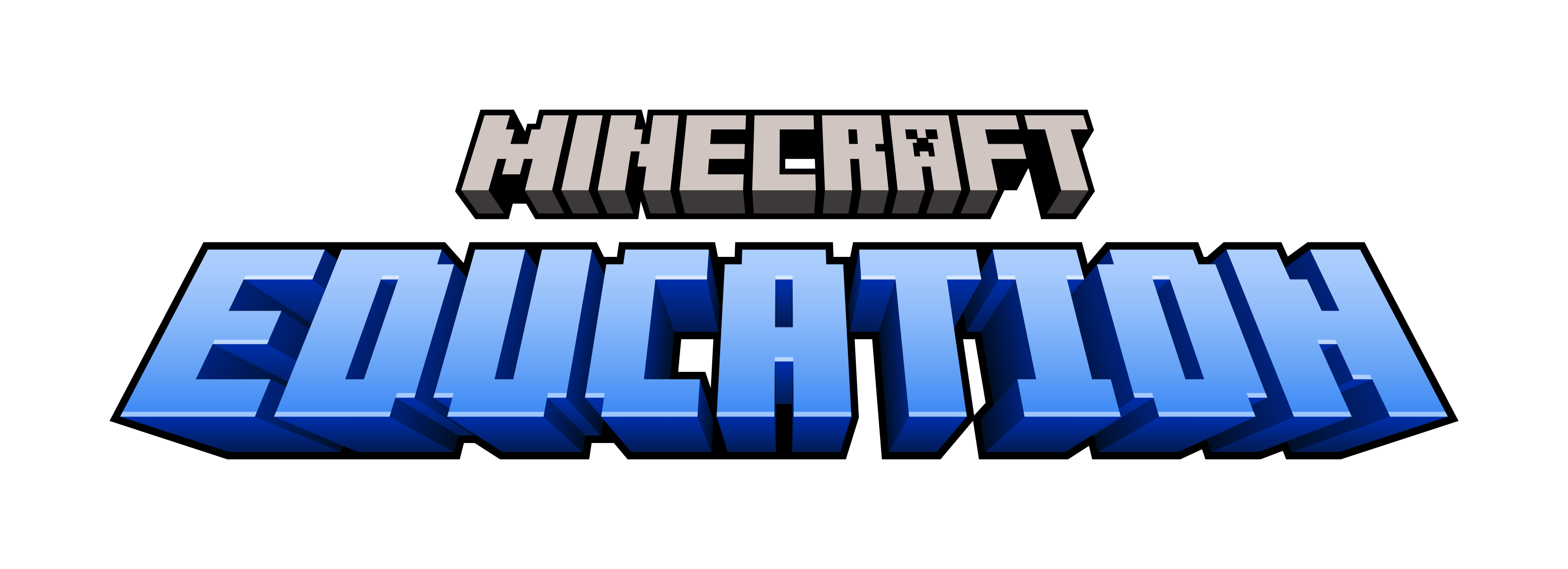A remote province in Canada brings students together through Minecraft
13 Aug 2021

Educators and families continue to recognize the importance of developing a global culture that supports future-ready skills like critical thinking, collaboration, communication, creativity, and citizenship. One remote province in Canada shares their story in this article after having Minecraft: Education Edition integrated into its programming. They share how students are developing new skills, values, and attitudes, enjoying a more self-directed approach through a myriad of learning environments, and they're seeing value in the freedom to perform for any type of learner.
Follow along below as Program Specialist for Technology Education K-12, John Goldsworthy, shares this story. Find more information on getting started with Minecraft for your educational organization to bring these new skills to your community of learners.
Newfoundland and Labrador is a remote province on the eastern tip of Canada. Our English school district serves a total of 63,000 students and over 250 schools. Half of those schools have less than 200 students in grades K–12, and many are in rural areas covering a large geographic catchment. Although COVID numbers were relatively low compared to the rest of the country, we still experienced intermittent closures throughout 2020 and 2021.
Newfoundland and Labrador English School District uses Google for Education, and our provincial Department of Education also provides access to Microsoft Office 365 which includes Minecraft: Education Edition for all teachers and students. As a district, we are embracing the shift to deep learning and global competencies. Minecraft: Education Edition aligns perfectly with the values of deep learning and its shifting pedagogy. Our teachers are using Minecraft as a tool that empowers students to demonstrate their learning in new and exciting ways! Of course, Minecraft: Education Edition lessons also have direct curricular connections, so it’s being used to teach our curriculum too.
When it comes to global competencies—critical thinking, collaboration, communication, creativity, global citizenship, and character—Minecraft allows us to incorporate all these skills, attitudes, and values. Specifically, we can use lesson plans with curriculum connections and a more self-directed student approach while we simultaneously provide learners with the freedom to perform full-on creation. Minecraft has all the educational benefits that allow for educators to teach their lessons, and it provides a rich gaming platform that students can enjoy as they learn.
We officially rolled Minecraft: Education Edition out in December 2019 with face-to-face training in St. John’s, Gander, and Corner Brook. The training was facilitated by Logics Academy and was a huge success with our educators! The excitement about this new teaching tool spread quickly and led to continuing our partnership with Logics to offer several virtual sessions in early winter 2020. During our pandemic lockdown, we continued to partner with Logics so we could offer virtual sessions to our teachers. This momentum carried over into the next school year, and we offered even more virtual training sessions during the fall and winter months. We also see older students helping the younger learners when we’re at school in-person, which is a huge added benefit!

As a result of these efforts, we have adopted Minecraft as a cross-curricular teaching tool across grade levels. Educators are using Minecraft for remote learning and as a way for students to connect and collaborate. Some of our teachers have taken an especially keen interest in the platform. To demonstrate how powerful this tool can be, I wanted to share two teachers’ experiences in vastly different subject areas.
A Science Teacher’s Take: Lindsay Janes
I gave an optional Minecraft: Education Edition assignment and lab to my 2204 Physics class in the spring of 2020. One group did such an outstanding job of using the platform that I adapted the project for regular use this school year after getting an overwhelmingly excited response from my students. The task is basically a virtual version of the conservation of energy lab modified for the Minecraft environment and involves creating roller coasters that demonstrate physics principles. Minecarts and rails are perfect for that!
I gave the assignment to my students and promised them I would work to learn something about Minecraft alongside them. I attended a professional learning offered by the Technology in Education Special Interest Council while the students were working through their projects. The couple of hours I spent with lead teachers was extremely helpful, but ultimately my students were in control of their own learning throughout the project. We referenced discussion boards and help sites if we ever got stuck, and we all learned together.
You can see some of the results from this project here!
Having the physics lab in Minecraft really helped my students develop research skills. They had to find constants and derive some values based on given information. In terms of outcomes, students touched on the following skills, all essential parts of the Newfoundland and Labrador curriculum:
- Quantitatively analyze the relationships among mass, height, and speed using energy.
- Analyze common energy transformation situations using the work-energy theorem.
- Quantitatively describe mechanical energy as the sum of kinetic and potential energies.
- Quantitatively analyze problems related to kinematics and dynamics using the concept of mechanical energy.
- Quantitatively analyze the relationships among gravitational, potential, kinetic, and heat energy using the Law of Conservation of Energy.
- Determine the percent efficiency of energy transformations.
- Identify the theoretical basis of an investigation and develop predictions and hypotheses that are consistent with the theoretical basis.
- Use instruments for collecting data effectively and accurately.
- Compile and organize data using appropriate formats and data treatments to facilitate the interpretation of the data.
- Explain the importance of communicating the results of a scientific or technological endeavour using appropriate language and conventions.
Finally, students are developing the competencies of collaboration, communication, critical thinking, creativity, and character, especially if they work in groups. In terms of assessment, projects like these can be self-assessed or use contract grading very easily. Conferencing with students helps determine which outcomes have been met.
In the end, all of my Physics 2204 students used Minecraft: Education Edition, and half a dozen Grade 9s used it to represent their chemistry learning on ionic and covalent bonds. I plan to continue the projects I’ve done this year and explore even more opportunities. I’m hoping to discover ways to use the game as an option for the grade 9 science reproduction unit, and I would love to expand its use in my Physics teaching to the 3204 class as well. Minecraft: Education Edition is an expansive platform, so it’s simply a matter of finding the best ways to apply it to topics in my own teaching.
Language Learning with Minecraft: Mark Goulding
I had been aware of Minecraft: Education Edition for several years but was uncertain how to use it to assess my students effectively. I received professional learning time from my administration and worked with a colleague who was both an English Language Arts teacher and a gaming expert on Minecraft. Together, we developed an assessment with a tiered approach. We wanted to assess the reading and representing strands of ELA. We also needed to create an assessment that enabled teachers to empower students as advocates and leaders in their own learning experience.
The assessment revolved around five short stories that were rich in setting, imagery, and specific detail. Before starting the project, we read and discussed each story over a period of two weeks with particular attention given to those three aspects of the story.
We left each representation to the individual students’ own creative design, but all of them had to contain the following five elements:
- Design and Planning: Before going ahead with their draft, students had to carefully select which text and section of that piece they would be re-creating.
- Scale and Decorative Appeal: Students needed to dedicate some attention to both the overall scope of their representations and their finer, more intricate details.
- Aesthetic Appeal: Learners were expected to use specific details and creative thinking when re-creating aspects of the stories.
- Accuracy: While students had creative license, their grade would be largely based on their ability to capture the essence of the story’s setting, circumstances, and overall feeling or atmosphere.
- Rationale: Everyone wrote paragraphs explaining how they went about re-creating their scene, moment, setting, or circumstances and some of the key details they put into their representation to achieve it.
For those students who weren’t comfortable with the design aspects of the assessment, we offered a secondary option to help capture all learners. If they were new to Minecraft and found the representation daunting, they could create a 2D book cover appropriate to their story using pixel art.
Quantitatively, every student in both our classes submitted this project, and the class average was over 90% in both groups! Beyond the marks, there was also evidence of learning in the rationales that were created, demonstrating an integration of ELA outcomes, critical thinking skills, and an awareness of how Minecraft could effectively help them to reach those goals.

Looking ahead, I plan to utilize Minecraft: Education Edition when we’re reading the Shakespearean play Macbeth. We often teach students the idea of juxtaposition or contrast in scenes. There are particular scenes early in the play where students could capture the character’s perceptions of a place through representation—for example Duncan and Banquo’s perspective of Macbeth’s castle vs. Lady Macbeth’s. I think Minecraft lends itself well to capturing medieval settings and the dark, dungeon aspect of this castle later in the play.
I see a lot of opportunity to continue working with my colleagues to expand my own knowledge and efficacy with the platform and learn about its far-reaching potential. That way, I can continue to use the game as an effective tool to aid good teaching practice as I support other colleagues and their courses in my school.
Outcomes and Outlook
At a district level, we’ve seen incredible growth and adoption, which is very rewarding. We initially started with Minecraft as a side project, and now it’s engrained in our curriculum. Teacher buy-in has been a significant factor in our success, and the momentum continues to grow. Moving forward, we need to develop strong external and internal support for Minecraft by establishing close connections with our partners at Microsoft and Logics Academy and setting up lead teachers. We’re excited to develop a custom world project specific to our province as well as initiating a direct-to-student mentorship program with Minecraft speakers and experts.
I believe Minecraft: Education Edition is a powerful engagement tool for making students feel excited to come to school, and I’m excited to see continued adoption in topics across the curriculum!


